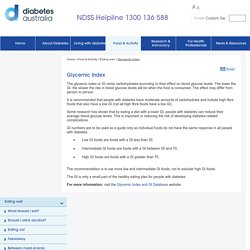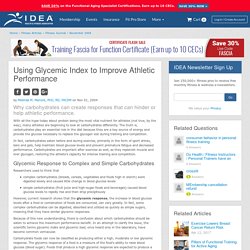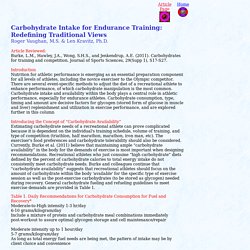Zoom
Trash

ScienceDirect Topics. GLUT1 Deficiency GLUT1 deficiency syndrome was described in 1991.12 The phenotypic spectrum of GLUT1 deficiency continues to broaden as more patients are diagnosed.

The clinical signature of the most common phenotype is an infantile-onset epileptic encephalopathy associated with delayed neurologic development, deceleration of head growth, acquired microcephaly, incoordination, and spasticity. Diminished brain glucose accumulation can be proven by positron emission tomography of patients using 18 F-deoxyglucose as a tracer.13 Movement disorders (Table 58.1) are almost invariably part of the phenotype, either in isolation or in the context of epilepsy. The two children described by De Vivo et al. in 1991 exhibited these neurologic signs. The presence of hypoglycorrhachia (diminished cerebrospinal glucose concentration) led the investigators to speculate that there was a defect in the transport of glucose across the blood–brain barrier. Physiology, Glucose Transporter Type 4 (GLUT4) - StatPearls - NCBI Bookshelf.
Adverse Effects Associated with Protein Intake above the Recommended Dietary Allowance for Adults. Skeletal Muscle – Anatomy and Fibre Types — PT Direct. Anatomy of skeletal muscle Skeletal muscle is made up of thousands of muscle fibres that run the length of the muscle.

Each muscle fibre consists of many contractile units called myofibrils which run the length of each muscle fibre. Individual muscle fibres are wrapped with fascia and then further bound together by more fascia into bundles called fascicules. These bundles of fascicles are then grouped together to form skeletal muscle which is coated by more fascia. Fascia is simply a type of connective tissue which provides a protective wrapping. The below image shows the various components that make up a muscle. As we know myofibrils are the contractile units that make up each muscle fibre. Human skeletal muscle glycogen utilization in exhaustive exercise: role of subcellular localization and fibre type - Nielsen - 2011 - The Journal of Physiology - Wiley Online Library. Glycogen availability and skeletal muscle adaptations with endurance and resistance exercise.
Postexercise muscle glycogen resynthesis in humans. Body Fuel – The Horse. Post exercise muscle glycogen resynthesis in humans [accepted man. Regulation of Muscle Glycogen Metabolism during Exercise: Implications for Endurance Performance and Training Adaptations. The Importance of Carbohydrates and Glycogen for Athletes. Regulation of Muscle Glycogen Repletion, Muscle Protein Synthesis and Repair Following Exercise. Carbohydrate: The Football Fuel. 828f01986b49ab136b9309b233c2ded61d3f. 58 1 supplement the fuels... Clinicalnutritionespen. About Glycemic Index - Glycemic Index Foundation.
Glycaemic Index. The glycemic index or GI ranks carbohydrates according to their effect on blood glucose levels.

The lower the GI, the slower the rise in blood glucose levels will be when the food is consumed. The effect may differ from person to person. It is recommended that people with diabetes have moderate amounts of carbohydrate and include high fibre foods that also have a low GI (not all high fibre foods have a low GI). Some research has shown that by eating a diet with a lower GI, people with diabetes can reduce their average blood glucose levels. This is important in reducing the risk of developing diabetes-related complications. GI numbers are to be used as a guide only as individual foods do not have the same response in all people with diabetes. About Glycemic Index. About Us Welcome to the home of the glycemic index – the official website for the glycemic index and international GI database based in the Boden Institute of Obesity, Nutrition, Exercise and Eating Disorders and Charles Perkins Centre at the University of Sydney.

The website is updated and maintained by the University’s GI Group which includes research scientists and dietitians working in the area of glycemic index, health and nutrition and headed by Professor Jennie Brand-Miller (AM, PhD, FAIFST, FNSA, MAICD) an internationally recognised authority on carbohydrates and the glycemic index with over 250 scientific publications. She is the co-author of many books for the consumer on the glycemic index and health and holds a Personal Chair in Human Nutrition in the Boden Institute of Obesity, Nutrition, Exercise and Eating Disorders and Charles Perkins Centre at the University of Sydney.
What is the Glycemic Index? Making sense of the glycaemic index – Dietitians Association of Australia. The Glycemic Index. Glycaemic Index of foods. HealthyEatingontheRun LowGlycemicIndexFoodList. Glycemic index for 60+ foods. The glycemic index is a value assigned to foods based on how slowly or how quickly those foods cause increases in blood glucose levels.

Also known as "blood sugar," blood glucose levels above normal are toxic and can cause blindness, kidney failure, or increase cardiovascular risk. Foods low on the glycemic index (GI) scale tend to release glucose slowly and steadily. Foods high on the glycemic index release glucose rapidly. Low GI foods tend to foster weight loss, while foods high on the GI scale help with energy recovery after exercise, or to offset hypo- (or insufficient) glycemia. Long-distance runners would tend to favor foods high on the glycemic index, while people with pre- or full-blown diabetes would need to concentrate on low GI foods. To help you understand how the foods you are eating might impact your blood glucose level, here is an abbreviated chart of the glycemic index for more than 60 common foods.
American Diabetes Association, 2008. Image: © Amarosy | Dreamstime.com. Carbohydrates and the glycaemic index. Digesting and absorbing carbohydrates Foods and drinks provide fuel for our body in the form of carbohydrates, fat, protein and alcohol.

Carbohydrates are the body’s preferred fuel source. The glycaemic index (GI) is a way to classify foods and drinks according to how quickly they raise the glucose level of the blood. It has replaced classifying carbohydrates as either ‘simple’ or ‘complex’. Foods that contain carbohydrates include bread, breakfast cereals, rice, pasta, legumes, corn, potato, fruit, milk, yoghurt, sugar, biscuits, cakes and lollies. GI Foundation Low GI Shopping List web. Low GI diet - food and drink. Food Lists : the glycemic index. GI and sports nutrition. With South African athletes competing all over the world and many people involved in intensive exercise programmes, the use of a tool such as the GI to determine what types of food can enhance endurance or produce top results, is highly topical.

Applicationoftheglycemicindexinendurancetraining. Using Glycemic Index to Improve Athletic Performance. Why carbohydrates can create responses that can hinder or help athletic performance.

With all the hype today about protein being the most vital nutrient for athletes (not true, by the way), many athletes are beginning to look at carbohydrates differently. The truth is, carbohydrates play an essential role in the diet because they are a key source of energy and provide the glucose necessary to replace the glycogen lost during training and competition. Carbohydrates in Sport - Glycemic Index Foundation.
Carbohydrates for training and competition: Journal of Sports Sciences: Vol 29, No sup1. Carbohydrates in training 1. Carbohydrate Intake. Burke, L.M., Hawley, J.A., Wong, S.H.S., and Jenkendrup, A.E. (2011).

Carbohydrates for training and competition. Journal of Sports Sciences, 29(Supp 1), S17-S27. Introduction Nutrition for athletic performance is emerging as an essential preparation component for all levels of athletes, including the novice exerciser to the Olympic competitor. There are several event-specific methods to adjust the diet of a recreational athlete to enhance performance, of which carbohydrate manipulation is the most common. Carbohydrate intake and availability within the body plays a central role in athletic performance, especially for endurance athletes. Table 1. Moderate intensity up to 1 hour/day 5-7 grams/kilogram/day As long as total energy fuel needs are being met, the pattern of intake may be by client choice and convenience Atkinson, F.S., Foster-Powell, K., Brand-Miller, J.C. (2008).
MMH09 JanuaryCarbs. The Athlete's Nutrition Needs. Endurance Nutrition: What to Eat Before, During & After Exercise. By: Dr.

Bill Misner Ph.D. Endurance nutrition: how and what to eat before, during and after exercise? Pre-event meal warning: eat 3 hours before exercise. Carbohydrates - The Master Fuel. Sporting performance and food. Daily training diet requirements The link between good health and good nutrition is well established. Interest in nutrition and its impact on sporting performance is now a science in itself. Whether you are a competing athlete, a weekend sports player or a dedicated daily exerciser, the foundation to improved performance is a nutritionally adequate diet. Daily training diet requirements. Sports drinks carbohydrate electrolyte drinks June 2017. Basics of Carbohydrate Loading for Sports Performance. Carbohydrate for endurance athletes - 33Shake. Sports drinks carbohydrate electrolyte drinks June 2017. Ergogenic aid - an overview. The use of nutritional ergogenic aids in sports: is it an ethical issue? - PubMed - NCBI. How much protein do you need every day?
Protein is essential to good health. The very origin of the word — from the Greek protos, meaning “first” — reflects protein’s top-shelf status in human nutrition. You need it to put meat on your bones and to make hair, blood, connective tissue, antibodies, enzymes, and more. Protein. Proteins are made of amino acids Protein is a nutrient your body needs to grow and repair cells and to work properly. Protein is found in a wide range of food and it’s important that you get enough protein in your diet every day. How much protein you need from your diet varies depending on your weight, gender, age and health. Meeting your protein needs is easily achieved from eating a variety of foods. Protein from food comes from plant and animal sources such as meat and fish, eggs, dairy products, seeds and nuts, and legumes like beans and lentils.
Protein for Vegetarian Athletes. Protein for Vegetarian and Vegan Athletes. Vegetarian Diet for Athletes. Adolescence is a time of experimentation and growth and this often happens within the realm of eating. Teenagers may decide to become vegetarians for various reasons including animal rights, religious reasons and/or perceived health benefits. Parents should engage their young athlete in a conversation regarding motivations for starting such a diet to ensure it is not being used as a means of weight control.
Types of vegetarian diets Being a vegetarian is not ‘one size fits all’ or the same for every person. Vegetarian Athletes Nutrition and Diet Tips. Vegetarian and vegan eating. Types of vegetarians Vegetarians are people who don’t eat meat or seafood and may not eat eggs or dairy foods. Vegans follow a form of vegetarianism, but consume only plant foods. Yes, You Can Be a Vegetarian and an Athlete, Too. Vegan diets: practical advice for athletes and exercisers. Vegetarian Fuelling and Muscle Maintenance.